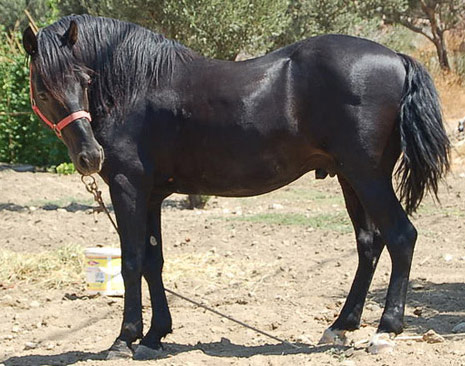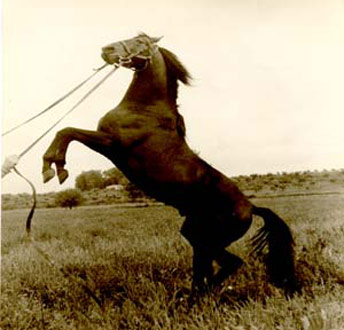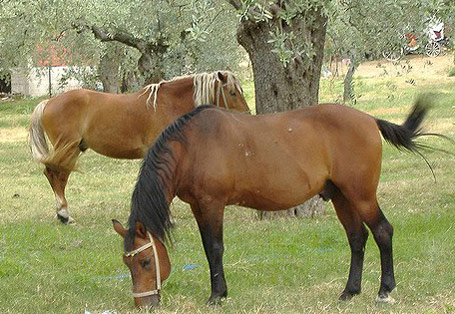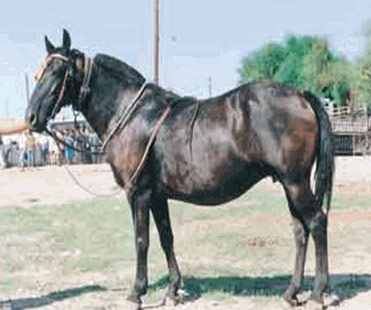



|
Intro
Also called the Eleia, Ilia, or Greek, little is known about the Andravida which is a very rare light draft breed found in the region of Ilia, Greece.
Characteristics
The most important part of the Andravida's appearance is that it is a large, strong horse. Its height ranges from fourteen to sixteen hands, with most of the horses at the upper end of the scale. It has a deep, muscular breast and powerful legs that make it a useful draft horse. The head is regular with no remarkable characteristics. The coloration is generally shades of brown, with red or blonde being slightly less common. Many of the show horses of the breed have white markings on the head or sides, and these are considered perfectly acceptable.
History
Ilia is a prefecture in the Peloponnese in western Greece. It is well known for its breeding of the Andravida and other horses, and most of this history occurs there. The first reports of the ancestors of the Andravida horse came from Ilia in the fourth century BC, where they were used by Athenians as cavalry. These horses were large, strong, and powerful, and could be used for working as well as fighting. In particular, they were used in conquest and on trade routes to carry goods. The next we know of the Andravida is from the seventh century AD, when Greek forces took a census of their cavalry and counted many Andravidas among the horses used.
Throughout the thirteenth to fifteenth centuries, the Andravida was bred heavily with Arabian horses which composed much of the Greek cavalry and also the French cavalry. There is a legend about the Andravida which states that sometime in the Ottoman period, a sultan was presented with a pair of Andravidas by the Turkish governor. He was so pleased that he granted the residents of Ilia the right to breed these horses exclusively. This is one of the main reasons the horse is so rare today: historically, it has not been bred outside of Greece, and rarely outside of Ilia.
The Greek army continued to use the Andravida as cavalry horses until modern times, with a fresh supply of these horses coming regularly from Ilia. More recently, they have also been used as show horses, particularly in racing, jumping, and showing. The newest development in the history of the Andravida may in fact save the breed from extinction. In the early 90s, the Andravida stallion Pegasus sired nearly fifty healthy colts, which were sent to breeders throughout western Greece. This led to the establishment of the official Andravida herdbook. However, its numbers are still scarce, and the likelihood that the Andravida will pull itself out of extinction is slight.
Features
Average height 14 – 16 hands
Large, strong horse
Temperament
Strong and willing draft type
|